The Novel Corona Virus is officially named as ‘COVID-19’ by the WHO. But how is a disease named by the WHO? What are the guidelines that govern the naming process? Here is a detailed explainer.
The World Health Organization (WHO) declared COVID-19 a pandemic on 11 March 2020 following the exponential increase in the number of cases being reported from around the world. Currently, the outbreak has reached 166 countries and the number of confirmed cases has crossed 2 Lakhs according to WHO’s dashboard. The number of lives claimed by the virus is also on the rise and has crossed 8500.
But have you wondered how the virus got its name? Did you know there is a naming convention for viruses and diseases as per WHO?
One may have come across different names for the virus that is rampantly spreading across the globe now. Corona, novel corona, coronavirus, are some of the terms. Even the American president, Donald Trump referred to the virus as ‘Chinese virus’ on twitter which sparked outrage, especially on social media.
Official name of virus and disease announced by WHO on 11 February 2020
Officially, the WHO announced that the disease is named COVID-19. It is an acronym for coronavirus disease. The number 19 stands for the year 2019 when the disease was first reported. The disease was first detected in Wuhan, China in December 2019.
The virus that causes this disease is named severe acute respiratory syndrome coronavirus 2 (SARS-CoV- 2).
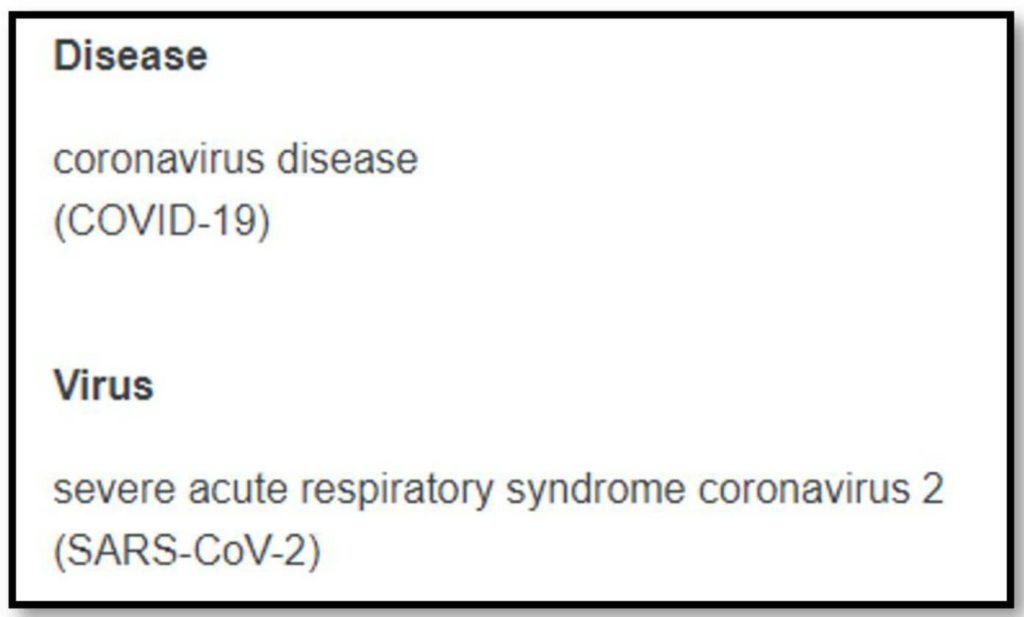
Naming of viruses and diseases follows different procedures
Viruses are named based on their genetic structure by the International Committee on Taxonomy of Viruses (ICTV). The genetic structure helps in classification and study of virus & its behaviour, thereby, enabling scientists to develop medicines and vaccines.
ICTV named the new virus as severe acute respiratory syndrome coronavirus 2 (SARS- CoV- 2), the official announcement of which was made on 11 February 2020. This name has been arrived at because the virus is related genetically to the coronavirus which was responsible for the Severe Acute Respiratory Syndrome (SARS) epidemic in 2003 which was also first discovered in 2002 in Guangdong province, China. The name ‘corona’ is the Latin word for crown. Coronaviruses have been so named because of the presence of protein spikes on their surface which resembles crown. The current coronavirus disease was initially temporarily named 2019- nCoV before virologists discovered the similarity. However, even though the viruses may be related, they are different.
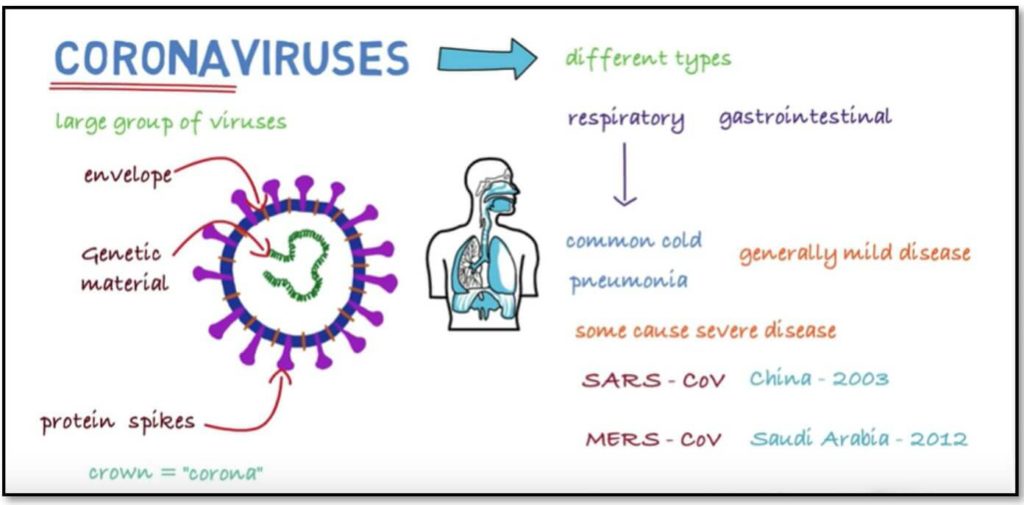
Diseases are named by WHO in the International Classification of Diseases (ICD). ICD provides a standard name for human diseases as per standard guidelines. Usually, the final name is assigned by ICD which is used by medical practitioners, policy makers, researchers, and many others around the world in order to classify diseases and maintain standardized health records.
WHO, in its communication with public refers to the virus as COVID-19 virus or virus responsible for COVID-19 because of apprehensions that using SARS- CoV-19 might create panic amidst people and also because there is scope for mistaking it to be SARS. The SARS epidemic in 2003 significantly affected Asian countries. Around 8000 cases and 800 deaths were reported world-wide.
Best practices for naming new human infectious diseases was released by WHO in 2015
In 2015, WHO issued best practices for naming new human infectious diseases. The main motive behind issuing the guidelines was to ensure that no country/region, people or animals are affected by the names assigned to diseases. The WHO, with inputs from Food and Agricultural Organization (FAO) and World Organization for Animal Health (OIE) has prepared the best practices guidelines.
The best practices are applicable to a newly discovered disease only if it satisfies the conditions mentioned. It must be an infection or a syndrome which has not been identified earlier in human beings. Further, the disease should be one that poses potential threat to public health.

WHO recommends using the following terms while naming a disease. It is mandatory that the names as far as possible be consistent with that of ICD’s content model reference guide.
- Generic descriptive term based on disease or syndrome such as respiratory disease, hepatitis, watery diarrhoea, neurologic syndrome, etc. representing basic characteristic of the disease which are unlikely to change.
- Specific descriptive terms also based on characteristics of disease should be used as long as adequate information is available and does not alter epidemiology. For instance, progressive, severe, juvenile, winter and many other terms.
- Name of causative pathogen along with other words that describe it must be used. However, a pathogen can cause more than one disease because of which the pathogen must not be equated with disease directly. An example is novel coronavirus respiratory syndrome.
- Assigning short names which are easy to pronounce is also important. In case long names are assigned, then acronyms are used. In such cases, potential acronyms must be evaluated to ensure that the name is in accordance with the best practices.
The following table gives examples of terms which are used while naming diseases. Usually, the year, or month and year is also used for distinguishing between similar events that took place at different times.
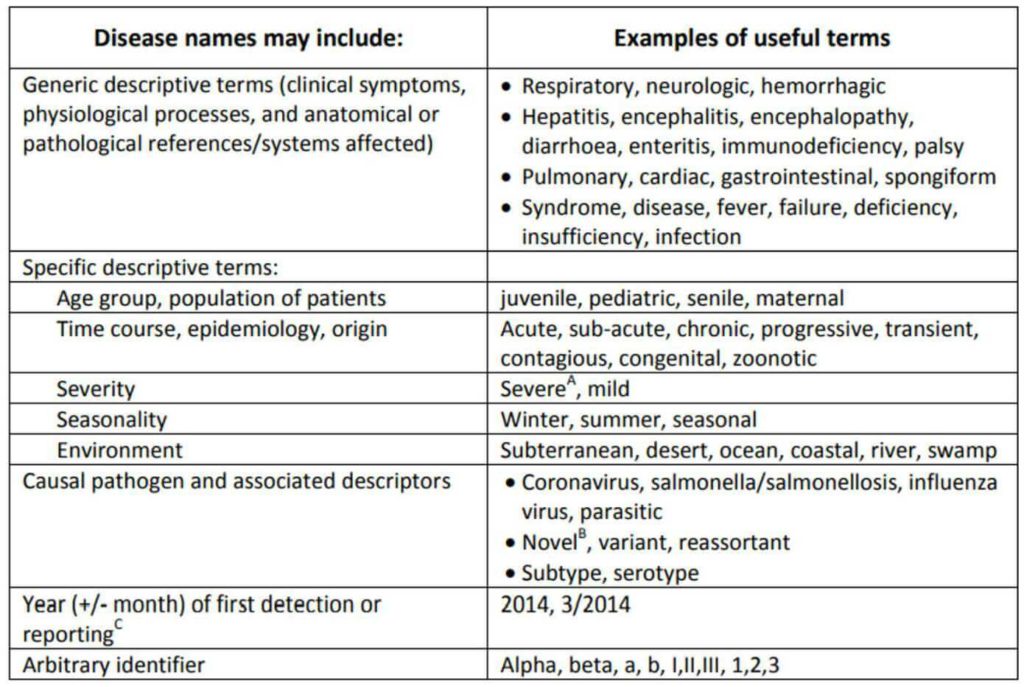
Usage of terms which stigmatize others has been prohibited
WHO has clearly stressed on not using certain words to name diseases as it can have a negative impact on a community or species. Geographic locations, names of people, names of species/class of animals or food, and words representing culture, population and occupation should not be used. Use of terms such as unknown, fatal, etc. which cause panic and fear among people is also discouraged. Some examples are given in the succeeding table.
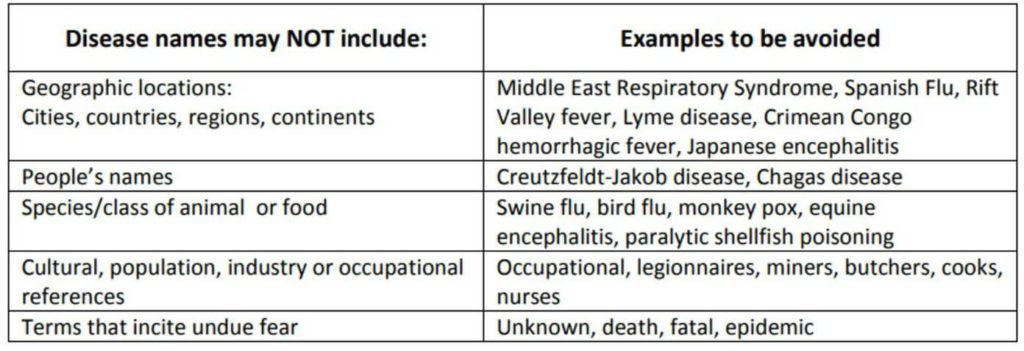
It is not that such terms have not been used earlier. Middle East Respiratory Syndrome, Japanese encephalitis, swine flu, birds flu, monkey pox, legionnaires, etc. are some of the names assigned to diseases. However, these names are misleading and dangerous. Such names have resulted in stigma and large-scale culling of animals. In addition to economic impacts as a result of ban on travels, commerce and trade, there have also been instances of racism and xenophobia targeting specific communities has been reported. The best practices were issued to prevent such incidents.
Trump tweeted ‘Chinese Virus’ which sparked outrage
Donald Trump took to twitter to refer to the virus as ‘Chinese virus’ on 17 March 2020. This comment has been criticized for being racist and reports suggest that WHO officials have warned the US President for his comment since naming practices were introduced to avoid such name calling.

However, Trump has tried to defend his usage of the term. On 19 March 2020, The White House tweeted that Spanish Flu, West Nile Virus, Zika, and Ebola were all named after places.
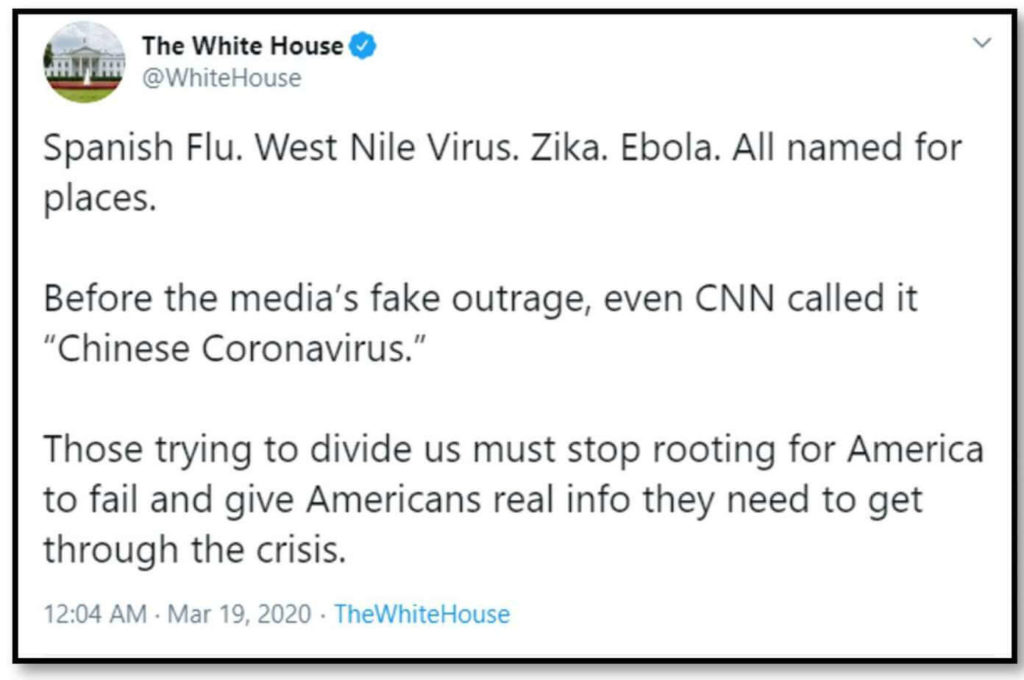
In the same tweet, the White House went on to criticize CNN for pointing out Trump’s words, by retweeting CNN’s old tweet on 21 January 2020 where the channel had referred to the virus as novel Chinese coronavirus. However, WHO announced the name of virus and disease only on 11 February 2020.
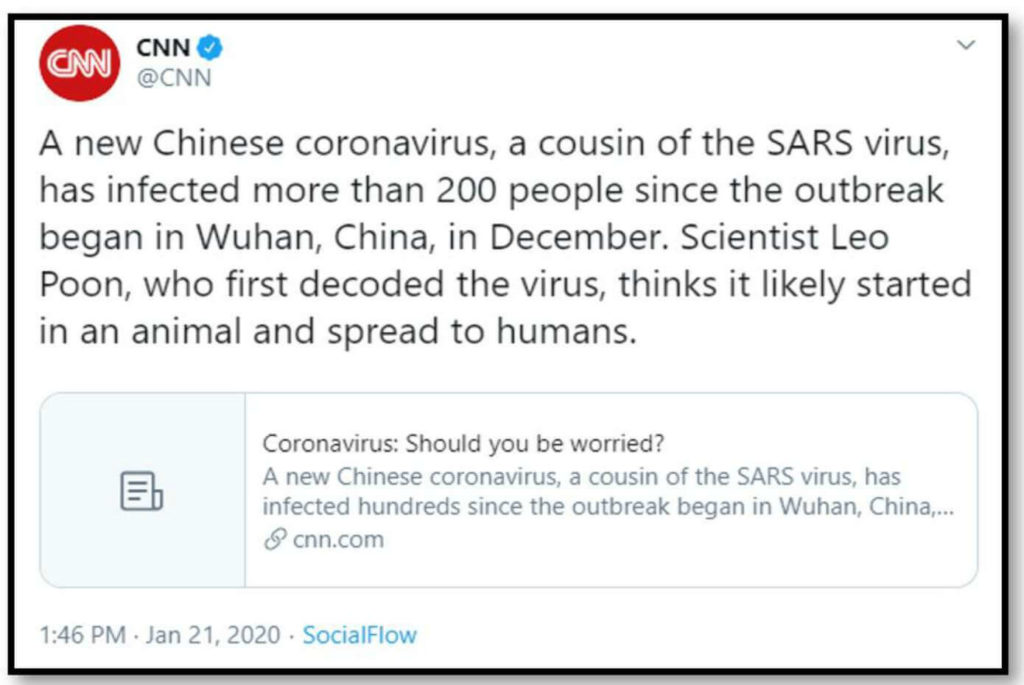
WHO has issued preventive measures
SARS-CoV-2 has been termed as the first pandemic sparked by a coronavirus.
to prevent spreading of the disease.- Refrain from touching their eyes, nose and mouth
- Maintaining social distancing- keep one-meter distance from someone who is coughing or sneezing
- Washing hands frequently
- If anyone shows any symptom such as difficulty in breathing or cough, it has been advised by WHO to seek medical care early
- Cover nose and mouth while coughing and sneezing
CREDIT LINK:https://factly.in/explainer-how-why-is-the-novel-corona-virus-named-covid-19/

